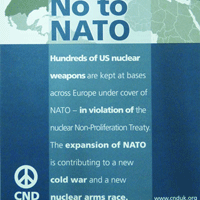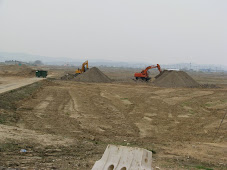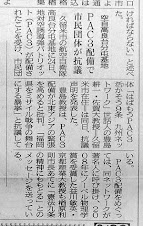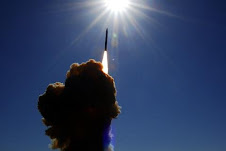Korea Times
02-01-2010 17:57
[Exclusive] S. Korea to Deploy Acoustic Weapon Locating System in Afghanistan
By Jung Sung-ki, Staff Reporter
The nation's arms procurement agency has ordered a U.K.-built hostile artillery locating system (HALO) that uses multiple acoustic sensors for its troops to be deployed to Afghanistan later this year, sources at the Ministry of National Defense said Monday.
The Defense Acquisition Program Administration (DAPA) sealed the contract with British defense group BAE Systems last week, with more orders being expected for force protection against possible North Korean provocation near the western sea border, the sources said.
"Related weapons procurement and upgrades are proceeding to properly protect our forces in Afghanistan," a ministry source said. "The HALO acquisition is part of that effort and the system, in particular, will help protect our troops from roadside bombs, referred to as improvised explosive devices (IEDs)."
In December, the Cabinet here endorsed a plan to send 320 troops, 40 police and 100 Provincial Reconstruction Team members to Afghanistan in July. A motion is awaiting parliamentary approval. The bill calls for a 29-month deployment.
The Korean military has U.S.-built artillery locating systems using acoustic technology, but they are subject to replacement as the systems were built in the 1980s.
HALO employs passive acoustic location techniques and precise meteorological monitoring and terrain data to locate and identify artillery or mortar sources as well as IED explosives.
The system can detect hostile firing near to adjacent friendly forces and identify areas of intensive activities. By detecting the occurrences of mortar fire, the launching of RPGs or improvised rockets, sniper attacks and other gunshots, HALO automatically defines an area assigned with more attention from aerial and ground surveillance, ambushes and patrols.
The system covers areas of more than 2,000 square kilometers and rapidly determines fire sources with location accuracy of 50 to 100 meters, by analyzing the acoustic propagation of the target's signatures.
HALO has been successfully deployed in high-profile combat zones, including Bosnia, Kosovo, Iraq and Afghanistan.
On top of that, the DAPA is equipping the four UH-60 helicopter for the Afghan mission with an anti-aircraft missile protection suite, the sources said. The protection system includes flare/chaff launchers, infrared guided missile countermeasure devices and radar threat receivers.
A defense division of Korean Air, a national flag carrier, will take charge of the modification works, he said.
Last month, DAPA said it plans to buy several U.S. Multipurpose All-Terrain Vehicles (MATV) to protect the 320 troops.
A proposal was sent to the U.S. government to buy MATVs through the foreign military sales program, a DAPA spokesman said.
The agency is also considering leasing or buying 10 Mine Resistant Ambush Protected (MRAP) vehicles if the purchase of MATVs fails.
IEDs are known as the number one threat in Afghanistan and account for 70 to 80 percent of casualties there, according to reports.
The U.S. Department of Defense has said that since 2007, the number of IEDs in Afghanistan has jumped 350 percent.
While many are found before they detonate, the number of troops killed has increased by more than 400 percent and the number wounded is up more 700 percent over the last two years, according to the Pentagon.
gallantjung@koreatimes.co.kr
Tuesday, February 2, 2010
Text Fwd: S. Korea to Deploy Acoustic Weapon Locating System in Afghanistan
Subscribe to:
Post Comments (Atom)

![[URGENT PLEA: In Update] EMERGENCY in GANGJEONG Since AUG. 24, 2011](http://2.bp.blogspot.com/-3iz8k-USXVY/TlmRYhhIYtI/AAAAAAAAL2c/9dbF85ZIkIs/s227/jejusit.jpg)



![[Solidarity from Japan for the Jeju] 253 individuals and 16 groups/organizations](http://2.bp.blogspot.com/_gnM5QlRx-4c/TR_YeNVE1yI/AAAAAAAAHWQ/ARyf6oQN0S0/S227/jeju_12_10j.jpg)

![[Translation] Korean organizations' statement: Immediately cancel the joint ROK-US drill Nov 26](http://2.bp.blogspot.com/_gnM5QlRx-4c/TPOE8VKXHFI/AAAAAAAAGlM/8lryt-8sFjc/S227/1.jpg)
![HOT! [Hankyoreh Hani TV] Beneath the Surface: the investigation into the sinking of the Cheonan](http://4.bp.blogspot.com/_gnM5QlRx-4c/TOI83qht8aI/AAAAAAAAGXU/22SW6Q5ntV8/S227/HaniTV%2BCheonan.gif)



![[Translation]Statement against illegal inspection and unjust lay-off by the Kunsan USAFK!(Nov_2010)](http://4.bp.blogspot.com/_gnM5QlRx-4c/TOPLsVkZMqI/AAAAAAAAGZs/3YnnckIyAaY/S227/gunsan%2Bprotest.gif)
![[Translation] Korean organizations' statement against dispatching special force to the UAE on Nov.](http://4.bp.blogspot.com/_gnM5QlRx-4c/TOP95zHXlCI/AAAAAAAAGak/E0Ug1XtUFfM/S227/antiwarpeace.jpg)
![[Translation] Stop, Joining MD!: South Korean activists' statement and writing on Oct. 25, 2010](http://3.bp.blogspot.com/_gnM5QlRx-4c/TOP7Es4_2sI/AAAAAAAAGac/eWVMPD-U4p0/S227/StopMD.jpg)
![[In Update] People First, NO G-20 (Nov. 6 to 12, Korea)](http://2.bp.blogspot.com/_gnM5QlRx-4c/TJd53XBzHlI/AAAAAAAAFQo/ldO9JPE3eqo/S227/left21_G20.jpg)
![[International Petition] Stop US helipad plan in Okinawa to save great nature](http://4.bp.blogspot.com/_gnM5QlRx-4c/TKC2AHRNzBI/AAAAAAAAFUo/yGWXODTw_uM/S227/yanbaru_w.jpg)

![[Global Network] against the first launch of Quasi-Zenith Satellite, Japan, on Sept. 11, 2010](http://4.bp.blogspot.com/_gnM5QlRx-4c/TIowa1boy4I/AAAAAAAAFDI/82rAi98uq-c/S227/Qzss-45-0_09.jpg)

![[In update] Some collections on the Koreans’ protests against the sanction & war on Iran](http://4.bp.blogspot.com/_gnM5QlRx-4c/TJMvke6t8zI/AAAAAAAAFO4/tamQ8LUnOOA/S227/No+Sanction+on+Iran.jpg)
![[Three International Petitions] to End the Korean war and peace treaty(or peace resolution)](http://1.bp.blogspot.com/_gnM5QlRx-4c/THef7bzWxYI/AAAAAAAAE44/wwdzSDfYhdw/S227/border.jpg)



![[Collection of Documents] No Base Learning and Solidarity Program_Korea(June 14 to 20, 2010)](http://1.bp.blogspot.com/_gnM5QlRx-4c/TCTvVuN8NeI/AAAAAAAAEek/8vBJVaHdk10/S227/No-Base-banner.jpg)
![Site Fwd:[John Hines] A U.S. Debate coach’s research trip on the Issues of Korea](http://3.bp.blogspot.com/_gnM5QlRx-4c/TINCO36mzzI/AAAAAAAAE_w/Rds12NcBOXM/S227/Jeju-Peace-Tour.jpg)


![[News Update] Struggle Against the Jeju Naval Base since Jan. 18, 2010](http://1.bp.blogspot.com/_gnM5QlRx-4c/S1vvWaP25uI/AAAAAAAACkg/QvpW1tgOlKM/S226/scrum1.jpg)


![[Urgent] Please spread the Letter!: There was no Explosion! There was no Torpedo! (May 26, 2010)](http://4.bp.blogspot.com/_gnM5QlRx-4c/S_9JmsKEU7I/AAAAAAAAEP8/sAWjSPqxzUI/S227/grounded.jpg)
![Text Fwd: [Stephen Gowans]The sinking of the Cheonan: Another Gulf of Tonkin incident](http://1.bp.blogspot.com/_gnM5QlRx-4c/TAL_FtYKQ-I/AAAAAAAAERE/NEEMijiEcRM/S227/lee-myung-bak.jpg)
![[Japan Focus]Politics in Command: The "International" Investigation into the Sinking of the Cheonan](http://1.bp.blogspot.com/_gnM5QlRx-4c/TBMJ2syJzyI/AAAAAAAAEZU/uTYZccU5vyk/S227/wen_jiabao_and_lee_myungbak.png)
![[Japan Focus] Who Sank the SK Warship Cheonan? A New Stage in the US-Korean War and US-China](http://2.bp.blogspot.com/_gnM5QlRx-4c/S_iQ2vE5ZpI/AAAAAAAAEOU/Oo1SPcAe8FE/S227/buoy_map.gif)
![[Updated on 12/13/10] [Translation Project] Overseas Proofs on the Damages by the Military Bases](http://4.bp.blogspot.com/_gnM5QlRx-4c/S-qSj59gPLI/AAAAAAAAEGM/mwjlFtPE-jo/S227/missile.jpg)
![[International Petition] Close the Bases in Okinawa](http://3.bp.blogspot.com/_gnM5QlRx-4c/S8-z3DYNwNI/AAAAAAAADo4/OswTSchK09M/S227/2.jpg)

![[In Update]Blog Collection: No Korean Troops in Afghanistan](http://4.bp.blogspot.com/_gnM5QlRx-4c/SwnlLD9IewI/AAAAAAAAB9E/oUPssnpNidA/S226/No-Troops-to--Afghanistan.jpg)











No comments:
Post a Comment